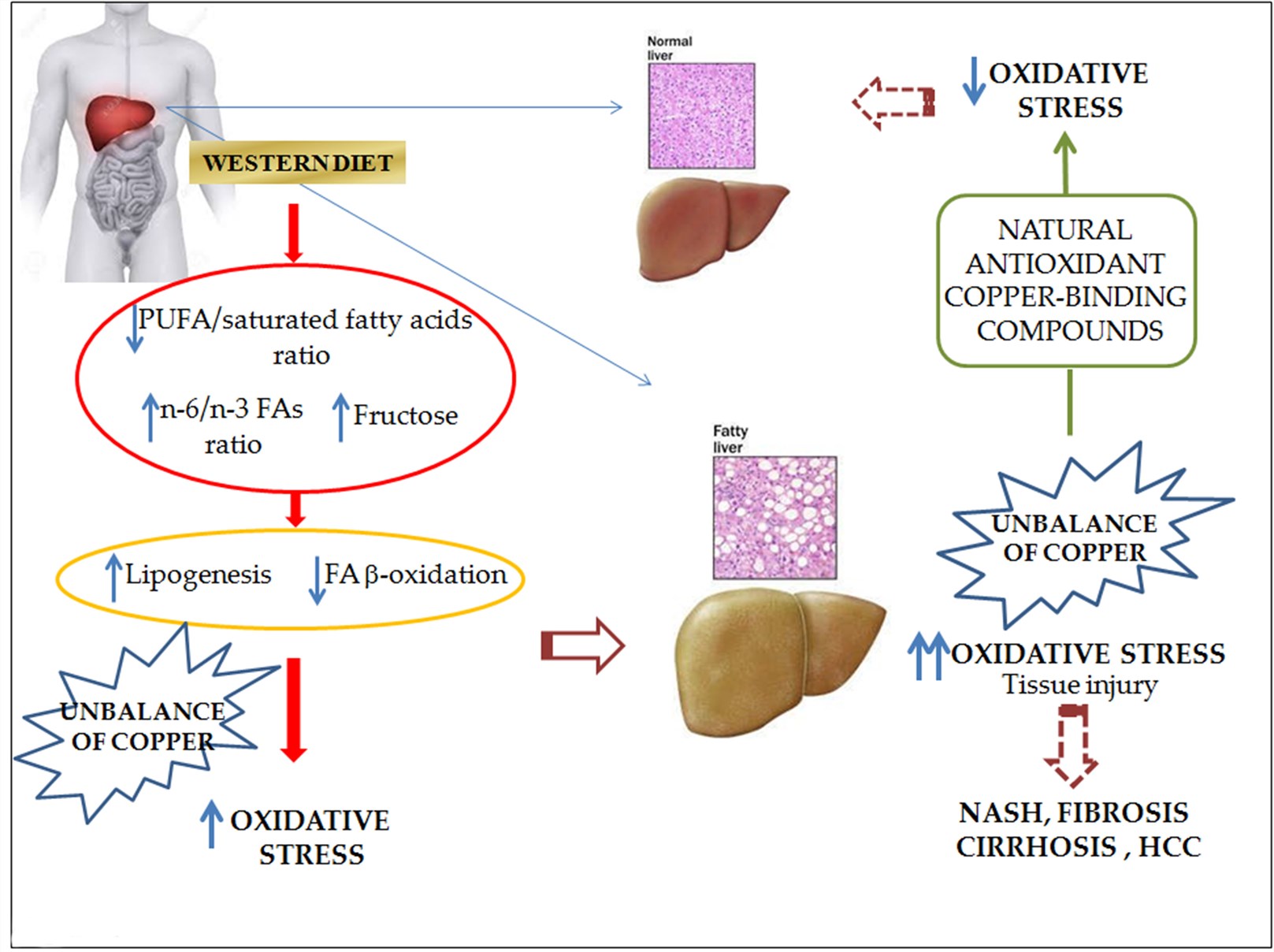NASH Target Development Service for Natural Antioxidants
Oxidative stress and antioxidants are known to play a vital role in the pathogenesis and severity of non-alcoholic fatty liver disease (NAFLD) or non-alcoholic steatohepatitis (NASH). Different natural antioxidants are employed in clinical trials. Besides the expertise in antibody design and engineering, Creative Biolabs is also dedicated to the areas of specific disease research and natural antioxidants development. Now, we supply natural antioxidants development services targeting the oxidative stress for NASH treatment.
Natural Antioxidants
Natural polyphenols are a wide class of phytochemicals sharing a common phenolic structure. They are classified as flavonoids and non-flavonoids. Flavonoids are formed by two phenolic rings connected by a three carbon bridge indicated as C6-C3-C6. Non-flavonoids do not have the C6-C3-C6 structure and can be formed by a single phenolic ring linked to one or three carbons, such as phenolic acids or hydroxycinnamic acids. Another subclass of non-flavonoids is represented by stilbenes, such as resveratrol, which display a C6-C2-C6 structure.
- Flavonols: Quercetin, Rutin, and Troxerutin
Quercetin is a dietary flavonol mainly occurring as glycosides and abundant in apples, red onions, red wine, berries, and citrus fruits. Quercetin has been characterized for its potent antioxidant activity both in hepatocytes and experimental liver injury. Rutin is a glycoside of quercetin. In a successive study, rutin was effective in inhibiting palmitate-induced macrophage activation and reducing liver fat by suppressing transcription of sterol regulatory element-binding protein-1c (SREBP-1c) and CD36 in the liver. Troxerutin, a trihydroxyethylated derivative of rutin, was also shown to reduce liver steatosis and improve metabolic phenotype of mice with a high fat diet by suppressing oxidative stress-mediated nicotinamide adenine dinucleotide (NAD) depletion and stimulating fat oxidation.
- Non-flavonoids: Resveratrol
Resveratrol is a polyphenolic compound that mainly exists in red grapes, mulberries, peanuts. Trans-resveratrol is naturally found in the skin of grapes. Cis-resveratrol is present in red wine but not in grapes and can be derived from the exposure of trans-resveratrol to UV irradiation. Resveratrol favorably impacts on metabolic health and ageing. It is able to reduce liver fat accumulation although not reducing body weight by different mechanisms, such as decreased lipogenesis and increased fatty acid oxidation.
Non-alcoholic Steatohepatitis (NASH) and Natural Antioxidants
NASH, the progressive form of NAFLD, is emerging as a main health problem in industrialized countries. Oxidative stress is closely associated with vascular dysfunction and with the initial step and the progression of steatosis, especially in NASH. Natural antioxidants are reported to have beneficial effects in preclinical models of NAFLD/NASH and in pilot clinical trials and natural polyphenols have been historically characterized for their potent antioxidants properties.
 Fig.1 Summary of the main information on the onset and progression of NAFLD linked to diet. (Antonucci, 2017)
Fig.1 Summary of the main information on the onset and progression of NAFLD linked to diet. (Antonucci, 2017)
Besides offering natural antioxidants development services, Creative Biolabs also supplies oxidative stress/ antioxidants biomarker (enzymic antioxidants and non-enzymic antioxidants) detection services in clinical and experimental models of NAFLD and NASH. Most of these are assayed predominantly in the liver, serum, plasma, and in a few cases, in whole blood samples. Major assay procedures for the detection of these markers include colorimetry, enzyme linked immunosorbent assay (ELISA), and immunohistochemistry (IHC). If you are interested in our services, please contact us for more information.
Reference
- Antonucci, L.; et al. Non-alcoholic fatty liver disease and nutritional implications: special focus on copper. Nutrients, 2017, 9(10): 1137. Distributed under Open Access license CC BY 4.0, without modification.
 For Research Use Only.
For Research Use Only.